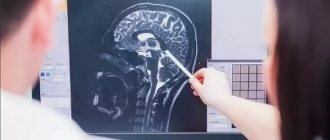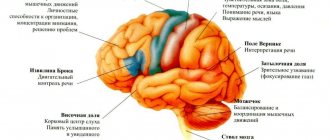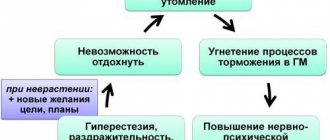In our Center we can offer comprehensive treatment of intercostal neuralgia using the Multigen radiofrequency ablation device. We will answer all your questions by phone. You can also ask a question by filling out the request form below.
Intercostal neuralgia , or thoracalgia , is pain that is felt along the passage of the nerve and is localized in the intercostal space. It may also be accompanied by other uncomfortable sensations - numbness, burning.
Causes of intercostal neuralgia
There are many sources that cause intercostal neuralgia. This can be external (poisoning with heavy metals, medications) and internal intoxication. The latter are usually associated with diseases in neighboring organs and tissues (pleurisy, spinal diseases).
Pain in the intercostal space is often caused by diffuse pathologies of the nervous system - hormonal spondylopathy, polyradiculoneuritis, multiple sclerosis, as well as infections such as tuberculosis and herpes zoster.
Often this symptom occurs due to spinal pathology, injuries, allergies .
Metabolic disorders and hypoxia of nervous tissue are promoted by anemia, diabetes mellitus, alcohol intoxication, hepatitis, malabsorption and decreased concentrations of B vitamins, atherosclerosis and hypertension.
As a rule, intercostal neuralgia, the symptoms of which everyone should know, develops under the influence of several factors. It is characteristic that it is never diagnosed in children. We can say that this is a disease of people mainly in the middle and older age categories.
Treatment
Therapeutic measures are complex, aimed at eliminating the provoking disease, relieving pain, and restoring the nerve trunk. Includes drug and non-drug methods. Conducted on an outpatient basis. How to treat intercostal neurosis:
- Painkillers. NSAIDs reduce pain and inflammation. In mild cases they are prescribed in tablets, in severe cases they are administered intramuscularly. According to indications, they are supplemented with therapeutic blockades with glucocorticoids and local anesthetics.
- Sedatives. Recommended to reduce the excitability of the nervous system and, as a result, reduce the severity of pain. They have an auxiliary value.
- Antiviral medications. Required for herpes virus infection. Used topically and orally. Supplemented with medications with antihistamine action.
- Muscle relaxants. Effective in increasing muscle tone against the background of overload and diseases of the spine. Combined with traction, massage, gentle manual therapy.
- Neurotropic therapy. To restore the nerve, ascorbic acid and B vitamins are administered intramuscularly. As part of physiotherapy, UHF, magnetic therapy, ultraphonophoresis and reflexology are prescribed.
How to treat intercostal neuralgia?
Since this symptom develops against the background of a large number of different diseases, the doctor must accurately identify the cause of its occurrence and prescribe adequate treatment.
Intercostal neuralgia sometimes simulates an attack of heart pain, but discomfort appears predominantly in the left half of the chest; moreover, it does not depend on breathing or movement and does not occur with external palpation.
The most advanced diagnostics are now possible using the most modern research methods, such as computed tomography and magnetic resonance imaging. These techniques make it possible to detect neoplasms, signs of changes in the brain and spinal cord, and damage to internal organs with high accuracy.
During the acute period, the patient should strictly observe a rest regime. It is necessary to limit sudden movements, physical activity, and body turns. Sitting should be avoided. You need to lie on a flat and level surface. You can apply sand in bags, pepper patch, or a heating pad, that is, dry heat, to the painful area. To enhance the thermal effect, you can tie yourself with a scarf made of natural wool.
Prognosis and prevention
The outcome is usually favorable, with most people making a full recovery. With herpetic genesis of the disease, relapses are possible. The presence of persistent symptoms that are not eliminated using standard methods of therapy indicates the need for a more thorough examination to identify somatic diseases or hypochondria. Preventive measures include timely detection and treatment of vertebroneurological and infectious pathologies, prevention of overload and hypothermia.
You can make an appointment with doctors at our clinic by calling 8(969)060-93-93.
Tablets for intercostal neuralgia
Of the medications that alleviate the course of this disease, the first place goes to analgesics (analgin, sedalgin) and non-steroidal drugs (ibuprofen, piroxicam, indomethacin), which have anti-inflammatory properties. They should be taken regularly for pain prevention purposes, without waiting for a new attack to occur.
Drugs that belong to the group of muscle relaxants (tizanidine or baclofen) help not only eliminate pain, but also relieve muscle spasms in the area of injury. Medicines in this group must be used with caution, especially for people driving and associated with work involving a high concentration of attention.
To relieve nervous tension, you can take sedatives. Be sure to carry out vitamin therapy . Complexes containing daily dosages of B .
Intercostal neuralgia with unbearable pain can be successfully relieved with lidocaine or novocaine blockades . These procedures are usually performed in specialized centers. But in particularly severe cases of the disease, the prescription of steroids, usually prednisone, is indicated.
A good effect is achieved when physiotherapeutic methods . They include UV irradiation of the corresponding paravertebral region, electrophoresis with lidocaine, especially in the acute period. When the phase transitions from acute to subacute, darsonvalization, microwave therapy, and phonophoresis are prescribed. Reflexology is widely used for this pathology.
Symptoms
Patients with scapular neurosis complain of sudden attacks of acute unilateral pain, which spreads along the intercostal space, encircling the body from the spine to the sternum. The nature of the pain syndrome often resembles an electric shock. In the initial stages, the symptoms are sometimes less pronounced, with episodes of tingling. Subsequently, the pain increases and becomes unbearable.
Irradiation to the epigastrium, heart or scapula is possible. Due to the presence of sympathetic fibers in the nerve, vegetative manifestations are often observed: local increased sweating, paleness or redness of the skin. The duration of paroxysms ranges from a few seconds to 1–2 minutes. At this time, the person freezes and stops breathing, because any movements increase the pain.
Even after the end of paroxysms, patients try not to make sudden movements, not to cough, not to laugh, not to breathe deeply, so as not to cause a new attack. During the interictal period, paresthesia may be detected: a sensation of tickling, slight tingling, crawling.
Upon external examination, there are no changes in most cases (except for the time of an attack accompanied by vegetative symptoms). There is no swelling or redness. There may be skin pain on palpation or, conversely, a decrease in skin sensitivity.
In patients with herpes zoster, a rash appears in the intercostal space on days 2–4 in the form of small pink spots, which then turn into blisters and dry out to form crusts. This variant of the disease is also characterized by itching, which is absent in other types of neuralgia.
With changes in the psycho-emotional state, clinical manifestations are subjectively perceived more acutely. The patient concentrates on his feelings, which contributes to the addition of a neurotic component and the development of hypochondriacal moods. Sometimes, due to the conviction that there is a severe somatic disorder (usually cardiac), patients refuse to accept the diagnosis and require additional examinations. Over a long period of time, depression may develop.
Consequences
Patients are concerned about the dangers of thoracalgia. The pathology itself is not fatal, but due to constant pain, which is accompanied by nervous tension, the risk of angina pectoris, hypertensive crisis (a sharp increase in pressure), and sometimes heart attack increases.
If left untreated, thoracalgia can cause heart disease
The consequences affect the patient’s daily life, insomnia occurs, work ability and quality of life decrease due to severe pain. In the absence of timely treatment, the disease becomes chronic.
Necessary examinations
When I encounter such phenomena, I immediately refer the patient for an ECG. This is especially true for people over 45 years of age, even if the signs are not typical for myocardial ischemia. It is better to make sure that the person is not in danger, and only then calmly carry out treatment for neurological or other abnormalities. If you have angina, you should do an ECG with stress, since it may not show any changes when pain is eliminated.
In some cases, it is necessary to use other instrumental methods:
- Coronary angiography. It is carried out using contrast injection and helps determine the presence of narrowing in the vessels of the heart.
- EchoCG. Ultrasound is used for this. It allows you to see the structure of the chambers of the heart muscle, the condition of the valves, the thickness of the walls, and the presence of inflammatory processes.
- Tomography of the spinal column (or MRI). Performed after ruling out cardiac pathology. During the manipulation, the size of the intervertebral spaces and the condition of the bone tissue, the presence of disc protrusions and pinched neurovascular roots are assessed.
The laboratory evaluates biochemical markers (ALT and AST), their increase indicates the development of a heart attack or myocarditis. More modern ways to determine acute necrosis are to increase the concentration of troponins in the blood.
Reviews
Most of the patients managed to cure intercostal neuralgia, since they consulted a doctor on time and followed his recommendations. But in some cases, therapy was delayed due to diagnostic difficulties.
Valery, 39 years old: “I had my first attack of neuralgia 2 years ago. I suffered for a week, and then went to the doctor. The pain was due to hypothermia. I was prescribed medications, vitamins, and physical therapy. I completed the course and the pain subsided. Now I am fighting the disease with the help of physical therapy and massage. There was no relapse."
Alina, 45 years old: “I turned to a neurologist at the very height of my illness. To relieve the pain, I was prescribed NSAIDs. Then I found a good manual therapist who helped consolidate the result. In addition, she attended reflexology sessions. At home, she massaged the sore areas with warming ointments and performed a set of exercises. It’s been a year now and the pain doesn’t bother me.”
Elena, 42 years old: “I believe that first of all you need to understand what exactly caused the intercostal neuralgia. If there are problems with the spine, then there is no point in taking a lot of medications, putting blockades, you need to find a good chiropractor. I was given blockades for about 4 weeks to relieve severe pain, but there was no point, it returned very soon. Only after treatment by a chiropractor, who corrected the displaced vertebrae, the pain disappeared. Now I do gymnastics and go to massage to prevent a relapse.”
Forms of the disease
Chest neuralgia can be primary (an independent pathology) and secondary (a symptom of another disease). There are also radicular and reflex forms of the disease. In the first case, symptoms of intercostal neuralgia on the left and right arise due to irritation of the spinal roots. The second type of pathology occurs due to a negative effect on peripheral receptors.
In addition, clinicians distinguish the following types of thoracic neuralgia:
- musculoskeletal;
- vertebrogenic;
- spicy;
- chronic;
- right-sided;
- left-handed;
- psychogenic;
- during pregnancy.
Intercostal neuralgia of a certain type has its own characteristic symptoms and treatment features.









